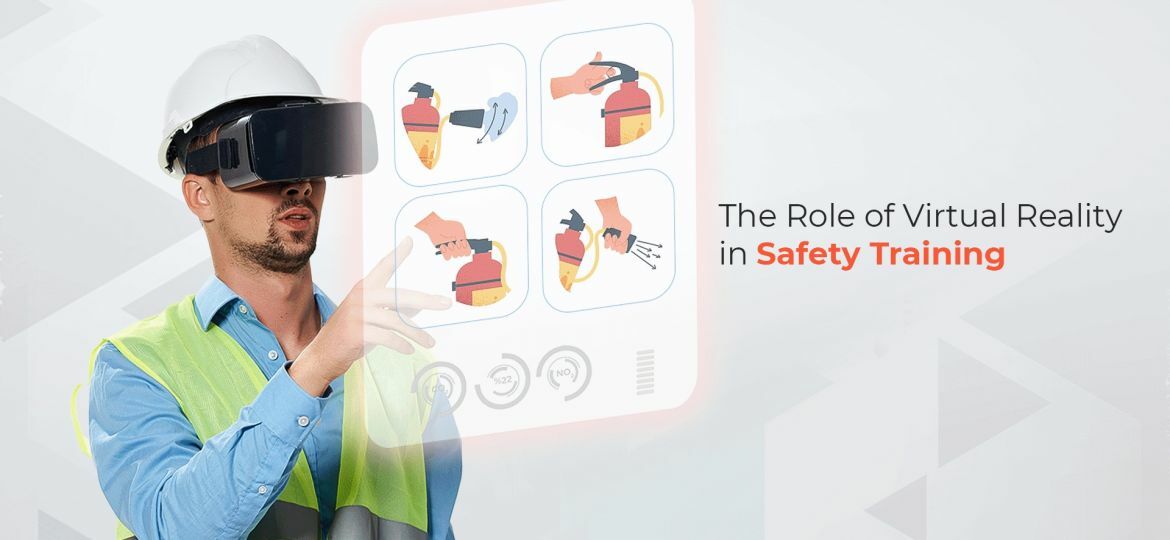
In today’s fast-paced and dynamic work environment, the well-being of employees remains paramount. As organizations strive for productivity, growth, and success, it is crucial not to overlook one fundamental aspect: workplace safety. Ensuring a safe and secure working environment is not merely a legal requirement but a moral responsibility that employers must uphold. This is where safety training comes into the picture.
A robust safety training program is pivotal in equipping employees with the knowledge, skills, and awareness necessary to identify potential hazards, mitigate risks, and respond effectively in emergencies. By investing in comprehensive safety training programs, companies not only prioritize the welfare of their workforce but also cultivate a culture of vigilance and proactive safety measures. However, more than traditional safety training approaches involving lectures or printed materials are needed to engage employees, thus reflecting poor knowledge retention rates.
On the other hand, the introduction of VR technology in safety instruction has transformed the whole experience into an entertaining and compelling learning experience. Since 2017, the retail giant Walmart has incorporated a VR experience to select employees in preparation for Black Friday. This is a hectic day when many incidents and tense interactions tend to occur, so the simulation helps prepare employees for the demanding situations they might face. Similarly, a renowned construction company in America chose virtual reality to design a next-level safety training program for its employees. This immersive training program was designed to accommodate multiple users simultaneously and provided an authentic experience by placing workers in a virtual construction site. These examples can be endless as more and more organizations have begun designing workplace safety training programs with virtual reality.
This article will reflect on how virtual reality is helping to lessen safety concerns by enhancing training outcomes and employee engagement. Read more
Virtual reality training solutions can be transformative. Here’s why:
4X
faster to train compared to traditional classroom training
2.75x
more confident to apply skills learned after training
3.75x
more connected to content than classroom learners
4x
more focused than e-learning peers
Benefits of VR Training for Safety
Virtual reality (VR) training has emerged as a powerful tool in the realm of workplace safety, offering a range of benefits beyond traditional training methods. Here are some critical advantages of utilizing VR for safety training:
Immersive and realistic experience
VR training simulates an immersive and realistic experience that closely mimics real-life scenarios. Employees can actively engage with simulated hazards, equipment, and workplace settings by creating a 3D virtual environment. This level of realism enhances the learning experience and allows trainees to practice their skills in a safe and controlled environment.
Enhanced engagement and retention
Traditional safety training methods often rely on lectures, videos, or written materials, which can be passive and less engaging. VR training, on the other hand, actively involves participants, making the learning process more dynamic and interactive. The hands-on nature of VR simulations enhances trainees’ engagement and retention of information, leading to better knowledge retention and application in real-world situations.
Risk-Free learning in a controlled environment
Mistakes can have severe consequences in high-risk industries such as construction, manufacturing, or healthcare. VR training provides a risk-free learning environment where employees can make mistakes and learn from them without putting themselves or others in danger. This allows trainees to build confidence, experiment with different approaches, and develop their skills in a safe setting.
Cost and time efficiency
Conducting practical safety training sessions in real-world settings can be costly and time-consuming. VR training offers a cost-effective alternative by eliminating the need for physical resources, equipment, and travel expenses. Employees can access VR training modules anytime, enabling flexible and efficient training without disrupting regular work schedules.
Customizability and adaptability
VR training platforms can be easily customized to meet specific safety training needs. Whether simulating emergency scenarios, equipment operations, or hazardous situations, VR allows for tailored training experiences. Training modules can be adapted to reflect different workplace environments, procedures, or potential hazards, ensuring trainees receive targeted and relevant instruction.
Performance tracking and assessment
VR training systems often incorporate performance tracking and assessment features. Trainers and supervisors can monitor trainees’ progress, identify areas for improvement, and provide personalized feedback. This data-driven approach to training allows organizations to measure the effectiveness of their safety programs and make informed decisions for further enhancements.
Industry-wise Use Cases
Virtual reality (VR) has transcended its status as a mere training tool and emerged as a profound catalyst in the realm of workplace safety. Its applications, from industrial fire safety training to VR construction safety training, have revolutionized traditional training methods by offering a transformative and immersive experience. The most common industries where VR safety training approaches are being vastly adopted include:

Construction

Healthcare

Manufacturing

Energy

Retail

Agriculture
And many more
Get Started with PROVEN Reality VR Fire Safety Training
PROVEN Reality virtual reality fire simulation training for workplace safety can revolutionize situational fire and safety. It uses sensors and trackers on the physical device, allowing virtual environments to adapt instantly to real-time human interactions. Unlike traditional learning methods (e.g., videos, papers, SOPs), trainees will learn in an immersive setting that closely resembles real-life situations. This will help them gain hands-on experience, leading to better knowledge gaining.
We have decades of experience building VR experiences for enterprises, and our portfolio includes plenty of training solutions. As a company, we’re passionate about empowering businesses to educate their workers better and boost engagement across the board. Contact us today.

